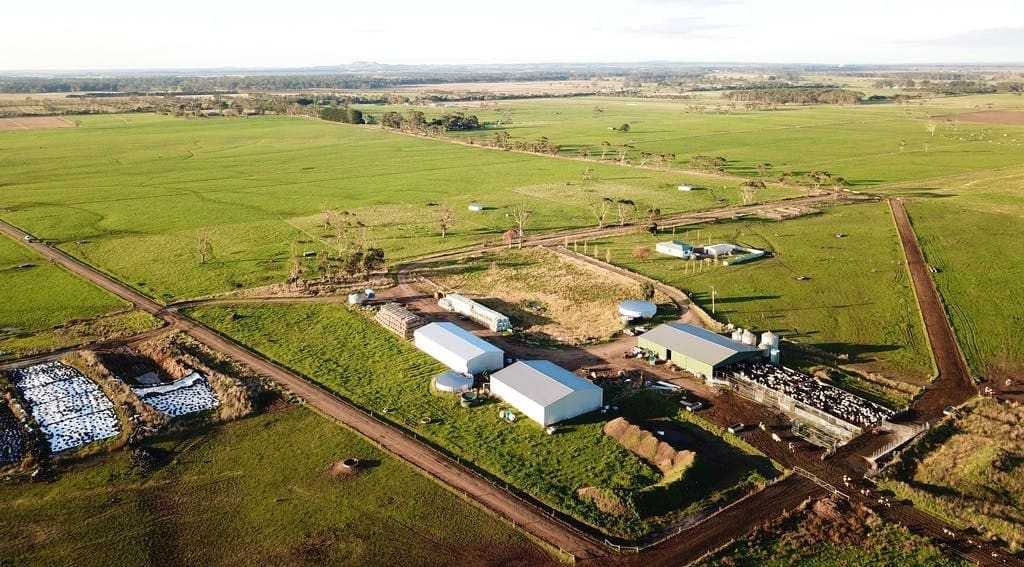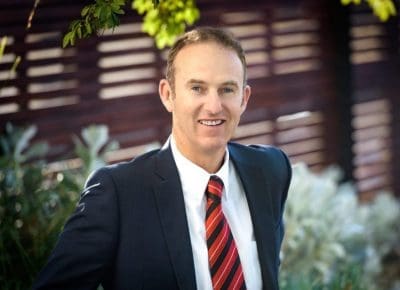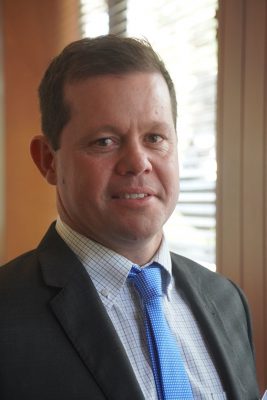
Karrara Farms and Acacia Dairy are situated at Ecklin South in a reliable, high rainfall traditionally dairying region, but are attracting interest from beef and sheep producers from NSW, South Australia and all parts of Victoria.
CONVERTING agricultural country from one commodity to another does not automatically lift land value, but it is a strategic decision being made by some producers considering the potential returns.
There have been a number of recent agricultural property sales examples across eastern Australia where land use has changed, for various reasons.
Will Gurry, the head of JLL Agribusiness, explained the term ‘highest and best use’ governs a property’s true value.
“For example, in the New South Wales’ Riverina, many sheep stations have recently been converted to irrigation and tree crops, such as almonds, and the development significantly changes the land value,” he said.

Will Gurry JLL
It appears the same can’t be applied to dairy properties converted to beef grazing, however.
In recent years, a significant number of dairy farms (typically with a 300-400 cow capacity) in Victoria’s south west have been acquired for beef use.
Mr Gurry said while the land had an underlying value driven by dairying or beef, beef cattle was the ‘higher and better use’ due to current high prices.
He said in these cases, land values would not be altered because there is no significant change in farm development.
“A dairy farm that is converted to grazing is just part of the market cycle. Producers who are in a position to purchase additional land stand to make more money due to high beef prices and low interest rates.”
“Beef prices are giving producers the opportunity or the financial backing to swallow up what might have been a neighbouring, smaller dairy farm,” Mr Gurry said.
Rob Rickard, Elders
Rob Rickard from Elders Camperdown has been inundated with inquiries for the largest parcel of land ever offered south of the Princes Highway in Victoria’s south west.
The neighbouring 647ha Karrara Farms and the 409ha Acacia Dairy are situated at Ecklin South in a reliable, high rainfall, premier dairying region.
Spanning 1055ha, the two properties combined could run between 20,000 and 25,000 DSE.

Rob Rickard Elders
Together they provide expansion opportunities for the existing dairy enterprises, or for producers seeking a larger holding for beef, sheep and/or fodder production.
Back in the 1930s, most landowners in Victoria’s south west were running either sheep or beef. Over time, most converted to dairying enterprises.
Mr Rickard said today that trend was reversing.
“Over the last 18 to 24 months, a large percentage of dairy farms in this region have been sold and converted to beef grazing simply because it is reliable country year-in, year-out – boasting good consistent seasons and rainfall through the growing seasons.”
Mr Rickard said interest was coming from beef and sheep producers in New South Wales, South Australia and all parts of Victoria.
“Interstate interest is rare. It is unusual to find a holding of this size because most properties in the district would average 200ha.”
Mr Rickard believes scale has held back prices.
“Most local dairy farms are between 300ha and 500ha and that’s not large enough to attract corporates or outside farming families. That is why the sale of these neighbouring properties are attracting so much interest – they are an economically viable proposition.”
“Potential purchasers are looking to move their operation to this area, many others are looking at the property as a safe and secure spot to finish beef and sheep, or to add security and safety to their existing holding,” he said.
Mr Rickard is anticipating the two properties will be secured by one entity for between $18 million ($17,000/ha) and $20m ($19,000/ha) or around $700/DSE.
“In my opinion, that would be the cheapest and most reliable dollar per DSE grazing country in Australia – that’s because these properties are located in a dairy zone which, until recently, has been depressed.”
Mr Rickard said the cost of converting country from dairy to sheep or beef was having no real impact on property prices.
“The valuation doesn’t take into account the extensive dairy infrastructure, just the flexibility of the land moving forward,” he said.
Phillip Kelly, Colliers International
In Queensland, western country in more marginal areas is experiencing a shift from cattle to sheep, lamb and wool production.
Colliers International’s Phillip Kelly said the reasons included the expansion in exclusion fencing, and a general recognition that Mitchell grass downs country is better suited to sheep than cattle.

Phillip Kelly Colliers International
“Some of that country transitioned to cattle and then, when it came through the drought, the owners realised that sheep would perform far better.”
With some sheep infrastructure having been removed, Mr Kelly said there will be a requirement for some capital injection backing (maintenance and watering points) for cattle properties reverting to sheep.
“Land values will not necessarily improve as a result. Producers are more concerned with returns per hectare, the survivability of sheep during dry periods compared to cattle, and the suitability of the country.”
The risk of any producer converting country in this way is missing out on the commodity cycle.
Mr Kelly said the key was taking a longer-term approach.
“No one wins by chasing a market. There is a time-cost involved as an owner transitions from one enterprise to another, and an existing business will need to absorb some short-term capital expense or losses in the business.”
He said changing farming methods had prompted some grain producers to move into more marginal country.
“Traditional livestock areas from Condamine, south to Meandarra, Inglestone and Westmar are now involved in large scale grain production.”
“Converting buffel or native grass into a grain producing paddock can be achieved reasonably quickly, but it can come with higher capital expenses, such as purchasing machinery,” Mr Kelly said.
Stephen Cameron, Herron Todd White
Stephen Cameron from valuers Herron Todd White in Toowoomba agrees that Mitchell grass downs country in Queensland with the benefit of exclusion fencing allows producers the opportunity to return to sheep, and this has been assisted by recent fat lamb and wool prices.
“The ability to source cattle at the moment is exceptionally difficult and producers in traditional sheep country can potentially make a quicker return on sheep than cattle from a cash flow point of view.”

Stephen Cameron HTW
Mr Cameron said at the end of the day, the market will determine a property’s value (and best enterprise application), especially if it has a dual purpose (ie. can run sheep and/or cattle).
“Exclusion or cluster fencing is reflected in the underlying value of a property, not transitioning commodities. Traditional sheep country is more likely to be valued on that basis.”
Mr Cameron said there was a perception that standard dairy operations in south east Queensland attracted a premium over and above grazing operations, but that had changed.
“The drought and the cost of feed pushed a number of dairy enterprises to market and these properties have sold for grazing and/or mixed farming and that is now considered its highest and alternate best use.”



HAVE YOUR SAY